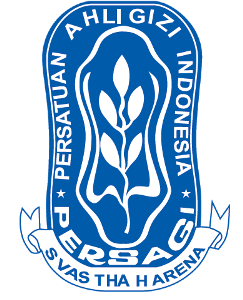Nutritional Status of Pregnant Women Aged Less Than 20 Years is a Risk Factor For The Incidence of Babies With Low Birth Weight (LBW)
DOI:
https://doi.org/10.21776/ub.ijhn.2022.009.01.6Keywords:
Low Birth Weight (LBW), nutritional status, adolescent’s pregnancyAbstract
Low birth weight (LBW) is influenced by various factors, such as maternal education, gestational age, maternal nutritional status, and economic level. The high pregnancy rate in adolescent mothers is in line with pregnancy complications experienced, one of which is giving birth to LBW babies. The aim of this study was to analyze the risk factors most associated with the incidence of LBW babies in mothers aged less than 20 years old in Wagir District, Malang Regency. The data collection method was used cross-sectional. The inclusion criteria in this study were mothers who were less than 20 years old, had given birth to a baby with LBW, and were domiciled in Wagir District. The data was analysed by logistic regression test. A total of 106 respondents participated in this study. The results showed that the factors that were significantly related were nutritional status (p-value 0.012), economic level (p-value 0.030), and gestational age (p-value 0.046). The dominant factor was nutritional status (p-value 0,012; OR 0,666). Nutritional status is the most influential thing for the health of both mother and baby, so the role of health workers in educating women during the preconception period regarding nutrition and the risk of pregnancy is essential.
References
- Guidelines on optimal feeding of low birth-weight infants in low- and middle-income countries [Internet]. [cited 2022 Jan 21]. Available from: https://apps.who.int/iris/handle/10665/85670
- National Population and Family Planning Board, Statistics Indonesia, Ministry of Health. Indonesia Demographic and Health Survey 2017 [Internet]. Available from: https://rhknowledge.ui.ac.id/uploads/resource_file/file/8/SDKI_2017.pdf
- Susanti R, Hasanah O, Utami GT. Perbandingan Kenaikan Berat Badan Bblr Yang Diberi Asi Dan Susu Formula Pada Dua Minggu Pertama Perawatan. :8.
- Rosita M. Analisis Faktor-Faktor Penyebab Pernikahan Usia Muda Di Kabupaten Probolinggo Berbasis Cluster. Swara Bhumi [Internet]. 2016 Dec 23 [cited 2022 Jan 21];4(02). Available from: https://jurnalmahasiswa.unesa.ac.id/index.php/swara-bhumi/article/view/17775
- Setyaningsih MM, Sutiyarsih E. Faktor-Faktor Determinan yang melatar belakangi Kehamilan Remaja di Desa Pandansari Kecamatan Poncokusumo Kabupaten Malang. J Ners Dan Kebidanan J Ners Midwifery. 2020 Aug 5;7(2):247–55.
- Nuzula RF, Dasuki D, Kurniawati HF. Hubungan Kehamilan Pada Usia Remaja Dengan Kejadian Berat Bayi Lahir Rendah (BBLR) Di Rsud Panembahan Senopati. J Kesehat “Samodra Ilmu. 11(2):122–30.
- The Relationship Of Low Birth Weight And Early Neonatal Mortality. J Kesehat Madani Med [Internet]. 2020 Jun 30 [cited 2022 Jan 22];11(1). Available from: http://jurnalmadanimedika.ac.id/index.php/JMM/article/view/108
- Putri AW, Pratitis A, Luthfiya L, Wahyuni S, Tarmali A. Faktor Ibu terhadap Kejadian Bayi Berat Lahir Rendah. 2019;3(1):8 (55-62).
- Nursaputri S. Analisis Faktor-Faktor yang Berhubungan dengan Kejadian Berat Badan Bayi Lahir Rendah (BBLR) pada Wanita Hipertiroid Kehamilan di Kabupaten Magelang Tahun 2014. Jurusan Ilmu Kesehatan Masyarakat Fakultas Ilmu Keolahragaan Universitas Negeri Semarang. 2015;136.
- Arisman Mb. Buku Ajar Ilmu Gizi Dalam Daur Kehidupan. Jakarta: EGC; 2010.
- Berghella V. Obstetric Evidence Based Guidelines, Third Edition. :381.
- WHO. WHO recommendations on interventions to improve preterm birth. WHO Press WHO Libr Cat-Publ Data Genewa Switz. 2015;
- Sholiha H, Sumarmi S. Analisis Risiko Kejadian Berat Bayi Lahir Rendah (BBLR) Pada Primigravida. Media Gizi Indones. 2015;10(1):57–63.
- Mahecha-Reyes E, Grillo-Ardila CF. Maternal Factors Associated with Low Birth Weight in Term Neonates: A Case-controlled Study. Rev Bras Ginecol E Obstet Rev Fed Bras Soc Ginecol E Obstet. 2018 Aug;40(8):444–9.
- Kaur S, Ng CM, Badon SE, Jalil RA, Maykanathan D, Yim HS, et al. Risk factors for low birth weight among rural and urban Malaysian women. BMC Public Health. 2019 Jun 13;19(Suppl 4):539.
- Desta SA, Damte A, Hailu T. Maternal factors associated with low birth weight in public hospitals of Mekelle city, Ethiopia: a case-control study. Ital J Pediatr. 2020 Sep 7;46(1):124.
- Reyes-López MA, González-Leyva CP, Rodríguez-Cano AM, Rodríguez-Hernández C, Colin-Ramírez E, Estrada-Gutierrez G, et al. Diet Quality Is Associated with a High Newborn Size and Reduction in the Risk of Low Birth Weight and Small for Gestational Age in a Group of Mexican Pregnant Women: An Observational Study. Nutrients. 2021 May 28;13(6):1853.
- Sari IP, Ardillah Y, Rahmiwati A. Berat bayi lahir dan kejadian stunting pada anak usia 6-59 bulan di Kecamatan Seberang Ulu I Palembang. J Gizi Indones Indones J Nutr. 2020 Jun 2;8(2):110–8.
- Kementerian Kesehatan Republik Indonesia. Pedoman Pemberian Tablet Tambah Darah (TTD) Bagi Remaja Putri pada Masa Pandemi Covid-19 bagi Tenaga Kesehatan [Internet]. Direktorat Promosi Kesehatan Kementerian Kesehatan RI. [cited 2022 Jan 21]. Available from: https://promkes.kemkes.go.id/pedoman-pemberian-tablet-tambah-darah-ttd-bagi-remaja-putri-pada-masa-pandemi-covid-19-bagi-tenaga-kesehatan
- webmaster. Pedoman Pemberian Tablet Tambah Darah (TTD) Bagi Ibu Hamil pada Masa Pandemi Covid-19 bagi Tenaga Kesehatan [Internet]. Direktorat Promosi Kesehatan Kementerian Kesehatan RI. [cited 2022 Jan 21]. Available from: https://promkes.kemkes.go.id/pedoman-pemberian-tablet-tambah-darah-ttd-bagi-ibu-hamil-pada-masa-pandemi-covid-19-bagi-tenaga-kesehatan
- Novianti S, Aisyah IS. Hubungan Anemia Pada Ibu Hamil Dan BBLR. J Siliwangi Seri Sains Dan Teknol [Internet]. 2018 May 31 [cited 2022 Jan 21];4(1). Available from: http://jurnal.unsil.ac.id/index.php/jssainstek/article/view/440
- Syifaurrahmah M, Yusrawati Y, Edward Z. Hubungan Anemia dengan Kejadian Bayi Berat Lahir Rendah pada Kehamilan Aterm di RSUD Achmad Darwis Suliki. J Kesehat Andalas [Internet]. 2016 Aug 11 [cited 2022 Jan 21];5(2). Available from: http://jurnal.fk.unand.ac.id/index.php/jka/article/view/542
- Retni R, Margawati A, Widjanarko B. Pengaruh status gizi & asupan gizi ibu terhadap berat bayi lahir rendah pada kehamilan usia remaja. J Gizi Indones Indones J Nutr. 2016 Dec 30;5(1):14–9.
- Azizah A, Adriani M. Tingkat Kecukupan Energi Protein Pada Ibu Hamil Trimester Pertama Dan Kejadian Kekurangan Energi Kronis. Media Gizi Indones. 2017;12(1):21–6.
- Syari M, Serudji J, Mariati U. Peran Asupan Zat Gizi Makronutrien Ibu Hamil terhadap Berat Badan Lahir Bayi di Kota Padang. J Kesehat Andalas [Internet]. 2015 Sep 1 [cited 2022 Jan 21];4(3). Available from: http://jurnal.fk.unand.ac.id/index.php/jka/article/view/355
- Mishra PS, Sinha D, Kumar P, Srivastava S, Bawankule R. Newborn low birth weight: do socio-economic inequality still persist in India? BMC Pediatr. 2021 Nov 19;21(1):518.
Downloads
Published
How to Cite
License

This work is licensed under a Creative Commons Attribution-NonCommercial 4.0 International License.

This work is licensed under a
Creative Commons Attribution-NonCommercial 4.0 International License




















